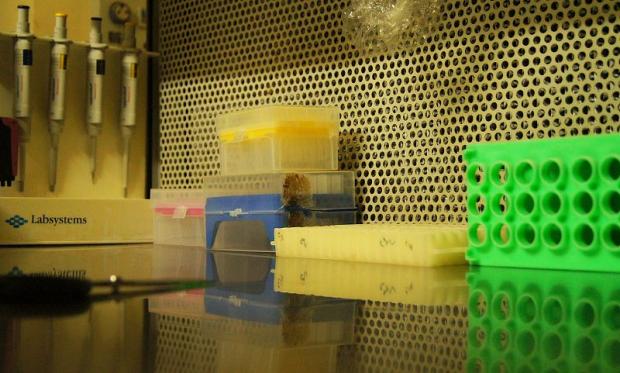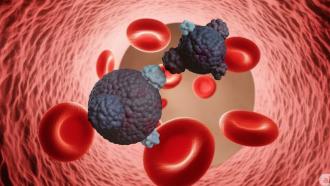
Photo: Siddharth Kankaria / Research Matters
A team at IISc, Bangalore has successfully developed a novel technique to target and destroy cancer cells through multiple actions.
As a group of diseases, cancer affects over 7 lakh people every year in India alone and kills majority of those that are affected. Cancer occurs when normal cells go rogue – tweaking certain functions that makes it easier for the cancerous cells to multiply and invade normal tissues, thereby affecting the organs’ functions. The current treatment for cancer involves radiation, chemotherapy and occasionally surgery, all aimed at killing the cancerous cells. However, these therapies can, at times, be inaccurate, killing a large number of healthy cells too.
A new type of therapy, called the Photodynamic therapy (PDT) or Photochemotherapy, has been engineered to target only the cancerous cells and spare the healthy ones. PDT uses drugs that are activated only when a certain type of light is applied. The drug, called a photosensitising agent, is applied topically or intravenously depending on where the cancer is located. The drug is engineered to preferentially accumulate in the cancerous cells. When the right kind of light is applied, the drug gets triggered and kills the cancerous cells, leaving healthy cells intact.
Recently, Prof. Akhil R Chakravarty from the Department of Inorganic and Physical Chemistry, in collaboration with Prof. Anjali Karande from the Department of Biochemistry both from Indian Institute of Science, Bangalore have synthesized a new molecule that can be used in PDT, which kills off cancer cells selectively. The molecule, a BODIPY (a complex donor base) appended oxovanadium (IV) complex, a vanadium containing complex molecule, was demonstrated to have specific chemical properties that made it a potent killer of cancerous cells. Because of a separable chloride ion, the molecule caused cross links in the DNA (DNA molecules get tangled losing their function) which leads to cell death. Singlet oxygen species was also generated when the molecule was exposed to light. This again leads to the death of the cell, by an alternate mechanism. The molecule accumulated specifically in the cancer cells’ mitochondria, an organelle of the cell that generates energy; causing damage to the mitochondrial DNA and resulting in cell death. The molecule was only active when visible light (400-700 nm wavelength) was applied. It was also demonstrated to be essentially non toxic in normal cells.
By the synthesis and characterization of a dual-action molecule, Prof. Chakravarty’s research group has been successful in advancing the field of cancer research. Controlling the activity of the drug through exposure to light (photodynamic therapy) is an entirely new approach to cancer therapy. As a result of its potent and multiple mechanisms in killing off cancer cells selectively, and with limited side effects to healthy tissue, the molecule holds much promise as a novel cancer therapy drug.

























